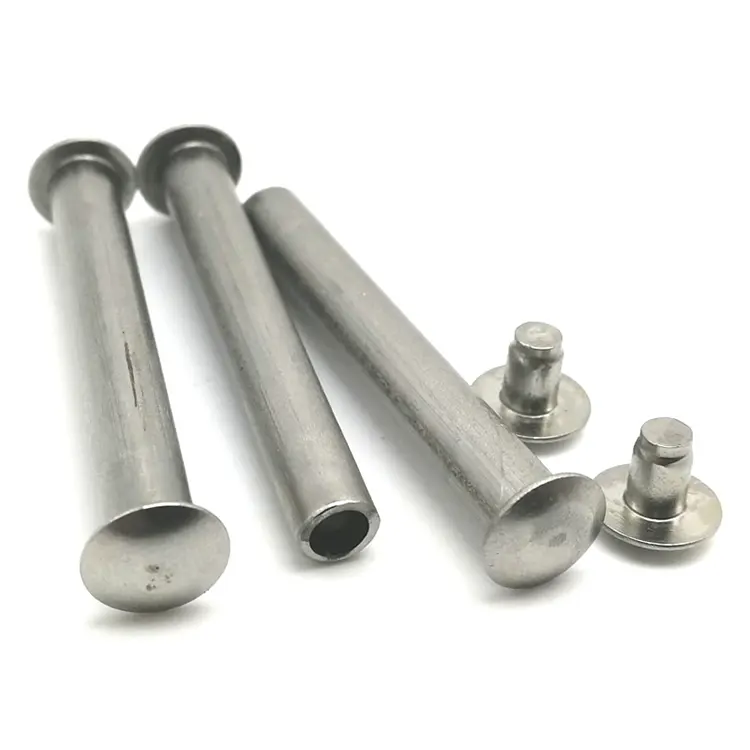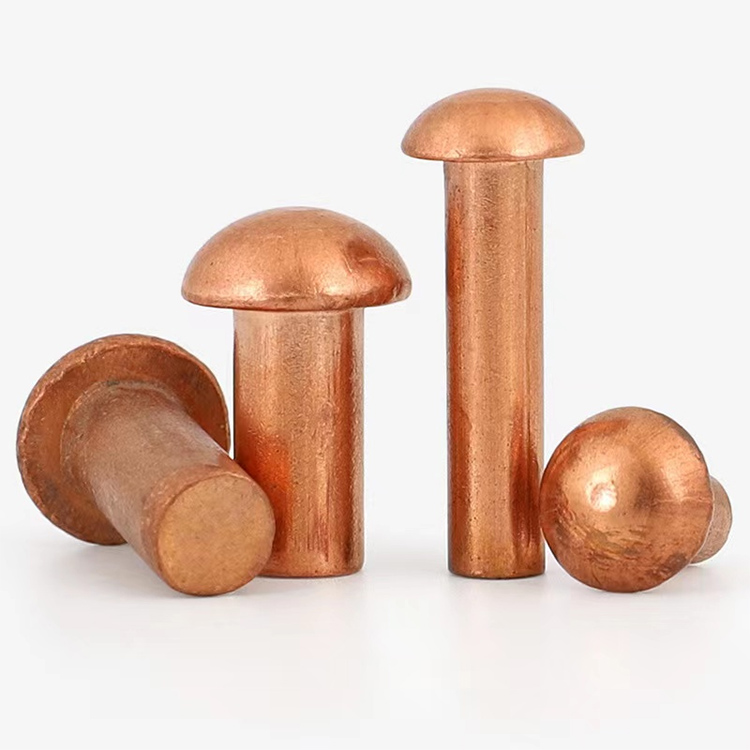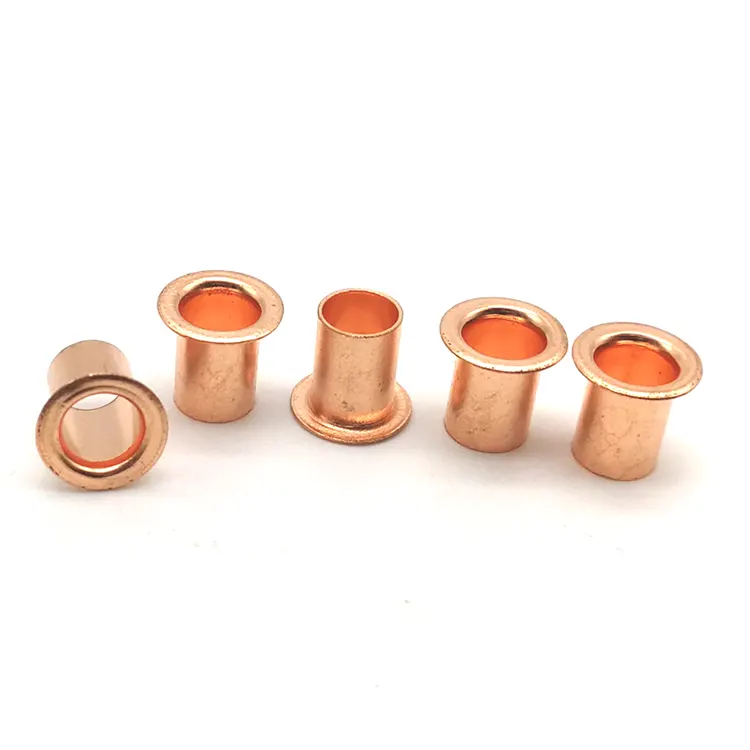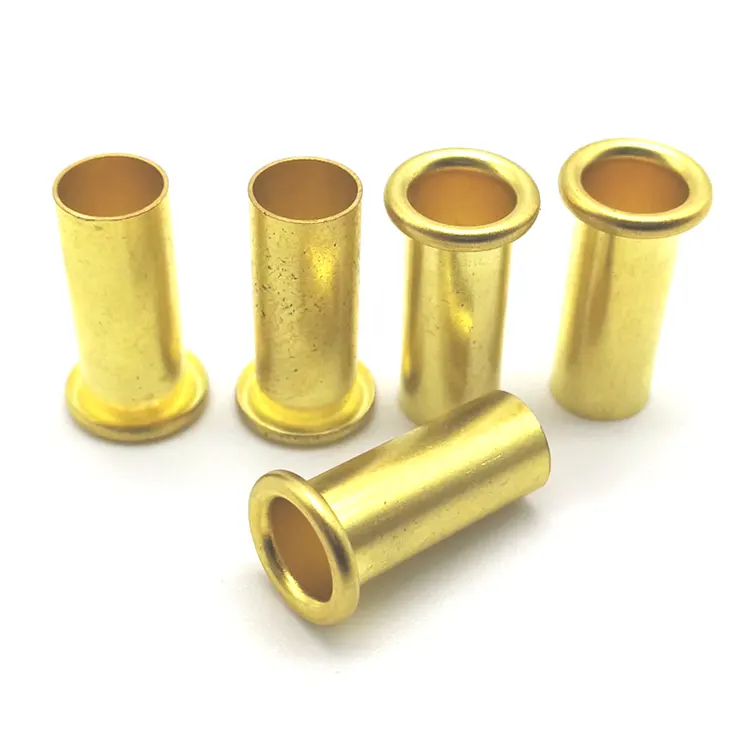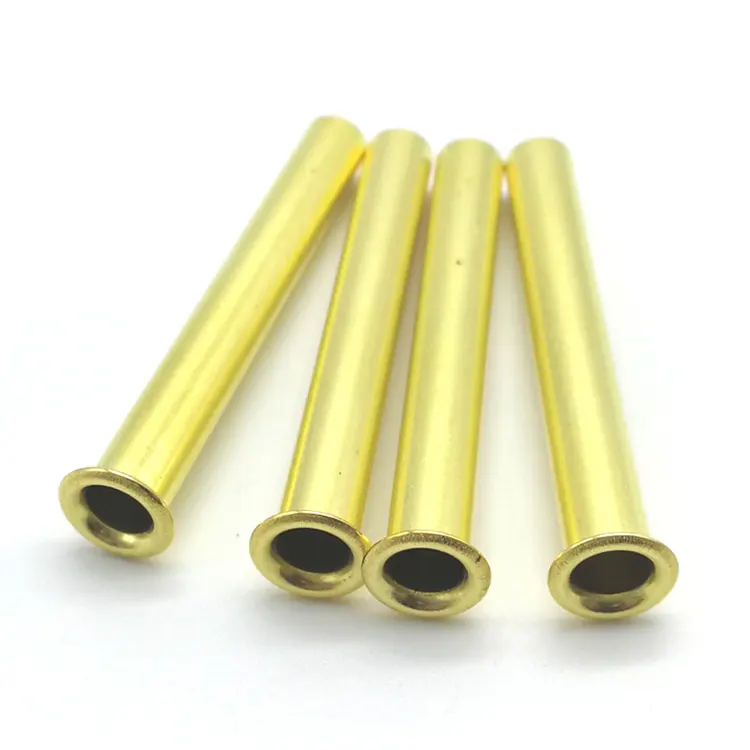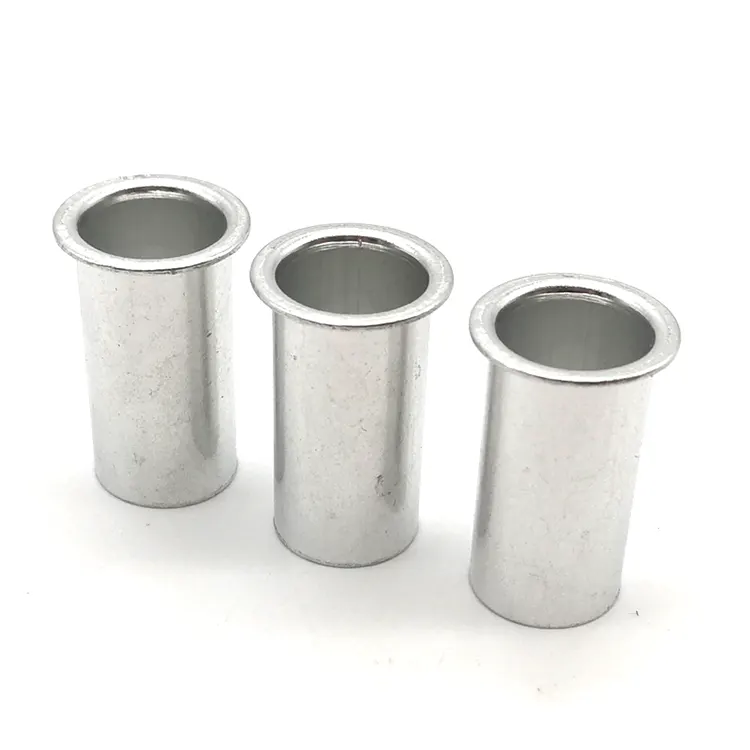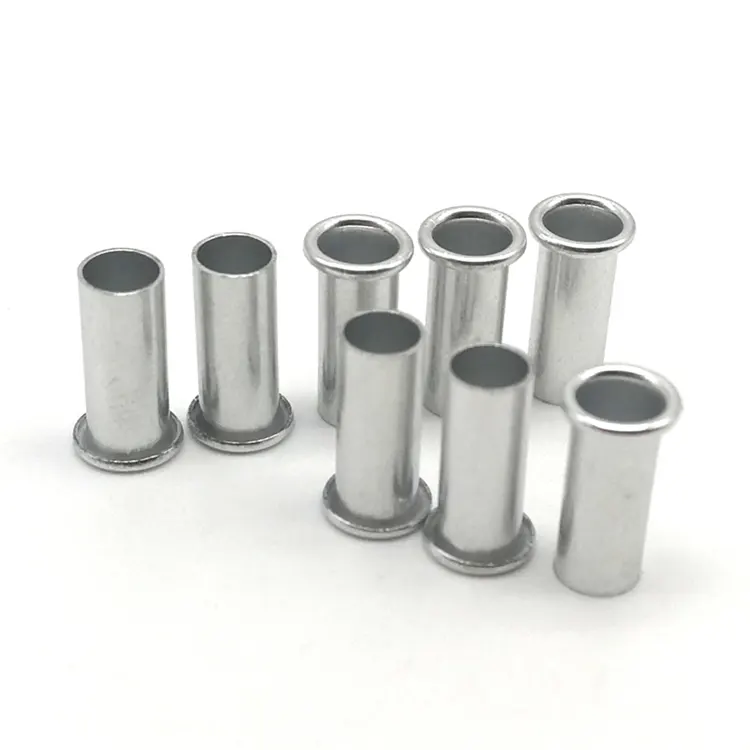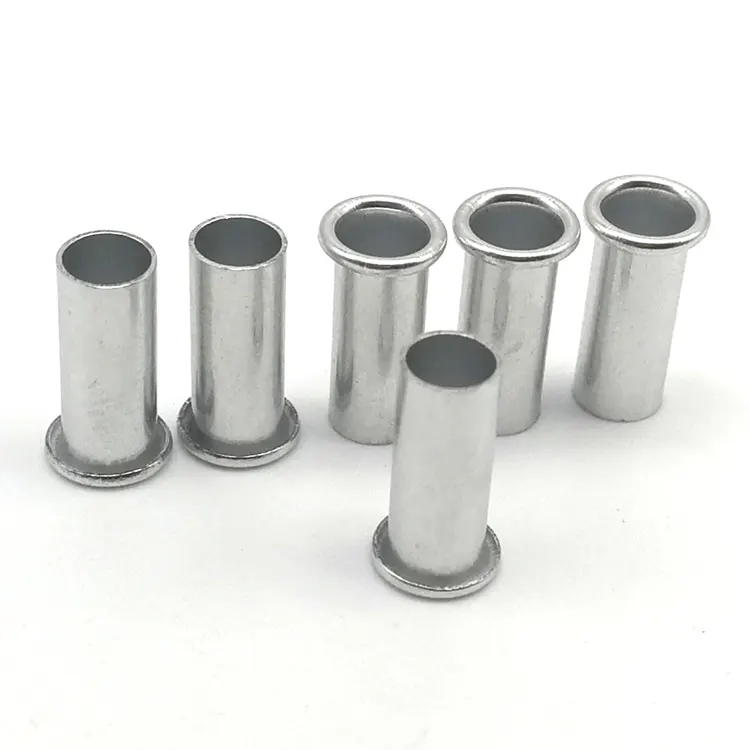Rebites tubulares completos
As one of professional high quality Full Tubular Rivets manufacturer, you can rest assured to buy Full Tubular Rivets from Notin and we will offer you the best after-sale service and timely delivery.
Full tubular rivets are also called as hollow rivets or tubular rivets, they are a common mechanical fastener, primarily used in applications requiring lightweighting or ventilation. Their structural characteristics are a completely hollow center with heads at each end, achieving connection through plastic deformation. Widely used in electronics, automotive manufacturing, aerospace, and other fields, they are favored for their unique structural design.
What is a hollow rivet?
A full tubular rivet consists of a shank and a head. The shank has a through hole in the center, and the head is typically round or oval. During installation, the rivet is inserted through the materials to be joined, and the tail is expanded using a specialized tool to form another head, securing the materials together. Because of the hollow center, full tubular rivets maintain ventilation or fluid conduction after connection, which is their primary difference from solid rivets.
What materials can full tubular rivets be made of? What are the characteristics of different materials?
full tubular rivets are made from a variety of materials, with aluminum alloy, stainless steel, and copper being common.
Aluminum tubular rivets are lightweight and corrosion-resistant, making them suitable for electronic products and lightweight structures. They are the most cost-effective rivets.
Stainless steel tubular rivets are strong and heat-resistant, and are often used in automobiles and industrial equipment. They are more expensive than aluminum hollow rivets.
Brass tubular rivets or copper tubular rivets have good conductivity and are mostly used for electrical connections. Their disadvantage is that they are relatively expensive.
When selecting materials, factors such as the use environment, stress conditions, and cost should be considered.
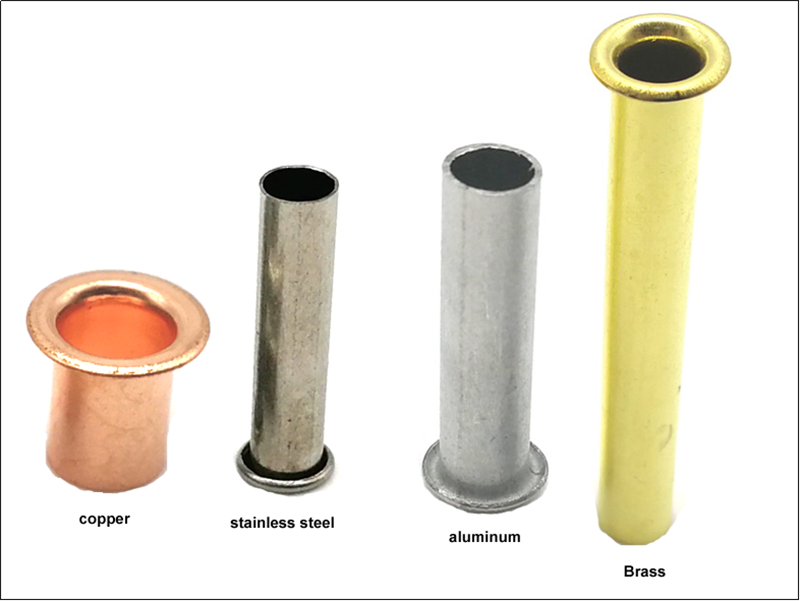
Installation method of full tubular rivets
Special tools are required to install hollow rivets, such as manual riveting machines or fully automatic assembly machines.
The operation steps are as follows:
(1) Drill a hole in the material to be connected, with the hole diameter slightly larger than the rivet diameter.
(2) Insert the rivet into the hole, ensuring that the head is close to the surface of the material.
(3) Align the rivet hole with the matching punch (the punch is installed on the riveting machine). (4) Shake the riveting machine so that the tail of the rivet is impacted by external force and curls up, forming the same arc as the head, thereby achieving the fastening function.
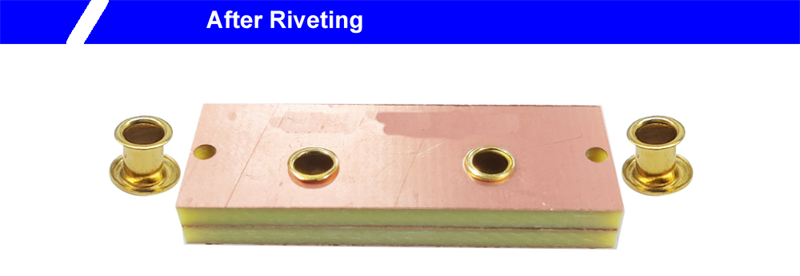
Advantages of Full Tubular Rivets
(1) Light weight: The hollow structure reduces the amount of material used and is suitable for weight-sensitive applications.
(2) Good air permeability: The through hole in the middle can be used for ventilation or diversion to avoid sealing problems.
(3) Easy installation: Only one-side operation is required, which is suitable for narrow spaces or occasions where the back cannot be accessed.
(4) Low cost: Compared with welding or bolting, the riveting process is simple, saving time and manpower.
Disadvantages of Full Tubular Rivets
(1) Limited strength: The hollow structure leads to weak tensile and shear resistance, which is not suitable for high-load scenarios.
(2) Non-removable: Once installed, the rivet is usually not reusable, and disassembly will damage the connection.
(3) Requirements for material thickness: Materials that are too thin or too thick may affect the riveting effect.
What are the main applications of hollow rivets?
(1) Electronic products: such as computer cases, radiators, etc., taking advantage of their lightweight and air permeability.
(2) Automotive manufacturing: used for non-load-bearing parts such as interior panels and wiring harness fixings.
(3) Aerospace: reduce weight while meeting some ventilation needs.
(4) Furniture assembly: connect metal or plastic parts and simplify the installation process.
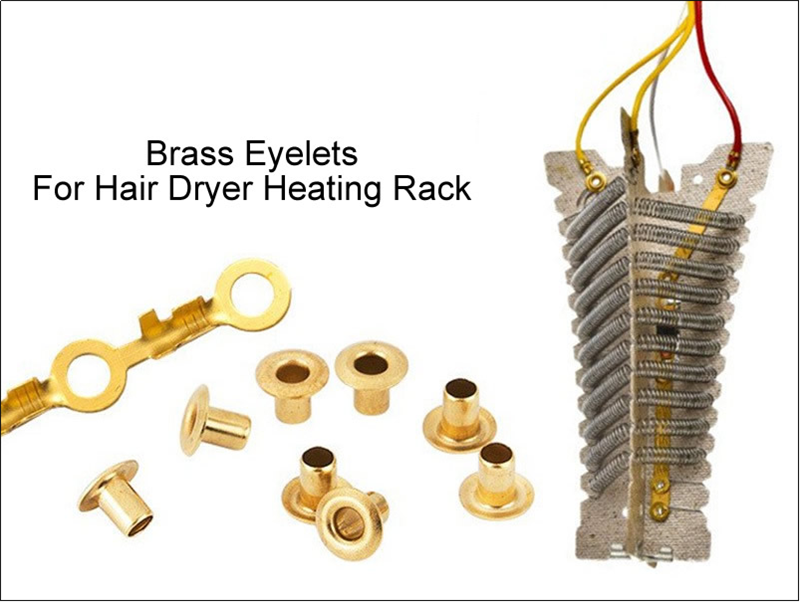
Comparison between hollow rivets and other rivets
(1) Compared with solid rivets: full tubular rivets are lighter and breathable, but have lower strength.
(2) Compared with semi-tubular rivets: the tail of semi-tubular rivets is partially hollow, with slightly higher strength, but the ventilation is not as good as full hollow rivets.
(3) Compared with blind rivets: the mandrel of blind rivets remains after installation, while the mandrel of full hollow rivets is completely detached, making the connection neater.
Suggestions for purchasing full tubular rivets
(1) Select rivets of appropriate length according to the thickness of the material to ensure that they can fully expand after installation.
(2) Consider the use environment. For example, corrosion-resistant or high-temperature resistant materials should be selected for humid or high-temperature conditions.
(3) Before purchasing in bulk, you can try it out first to confirm the riveting effect and tool compatibility.
Maintenance and precautions for full tubular rivets
(1) Avoid excessive force during installation to prevent rivet deformation or material damage.
(2) Regularly check the connection parts and replace them in time if they are loose or rusted.
(3) Keep them away from moisture during storage to prevent oxidation of the rivet surface that affects their use.
As a practical connector, full tubular rivets have irreplaceable advantages in specific scenarios. Understanding their characteristics and application methods will help you choose and use them reasonably in actual work, improving work efficiency and connection quality.
- View as
Rebetos ocos de cobre
O Copper Hollow Rivets é um fixador comum, eles são feitos de cobre de alta qualidade, que oferece excelente condutividade elétrica e térmica e resistência à corrosão. Em ambientes úmidos, um filme de óxido se forma naturalmente na superfície do cobre, fornecendo alguma proteção contra corrosão e prolongando a vida útil do rebite. No entanto, a dureza relativamente baixa do cobre o torna inadequado para suportar cargas mecânicas altas. Entre em contato com os metais Nuote para saber mais sobre rebites ocos de cobre.
consulte Mais informaçãoEnviar consultaRebites do tubo de latão
Os rebites do tubo de latão são rebites ocos feitos de latão, geralmente de forma cilíndrica com um orifício central. Sua função principal é conectar dois ou mais componentes através da fascinante. Eles são frequentemente usados em aplicações que requerem condutividade leve, elétrica ou resistência à corrosão. O Brass é uma liga de cobre-zinco, possui excelentes propriedades mecânicas e resistência à corrosão, tornando-a adequada para esses fixadores. A Nuote Metals é um fabricante profeso da rebites de tubo de latão.
consulte Mais informaçãoEnviar consultaRebites ocos de latão
Os rebites ocos de latão geralmente são feitos de tubos de latão. Os tubos de latão são difíceis, não são fáceis de corroer e resistentes a alta temperatura e alta pressão. Eles podem ser usados em uma variedade de ambientes. Ao mesmo tempo, eles são mais fáceis de dobrar, torcer, rachaduras e quebrar do que os metais comuns. A Nuote Metals é um fabricante profissional de rebites Hollow Brass na China, estamos nesse setor há mais de 10 anos.
consulte Mais informaçãoEnviar consultaRebites do tubo de alumínio
Os rebites do tubo de alumínio são feitos de liga de alumínio de alta resistência, com propriedades leves notáveis, com uma densidade apenas um terço da dos rebites de aço. Além disso, este material oferece excelente resistência à corrosão, resistindo efetivamente à erosão dos ambientes atmosféricos e de água do mar. O design exclusivo da estrutura oca reduz ainda mais o peso geral, mantendo a força. Os rebites do tubo de alumínio fabricados pelos metais do Nuote são ricos em precisão, fique à vontade para nos enviar sua consulta.
consulte Mais informaçãoEnviar consultaRebites para tubos de alumínio
Nuote Metals é um fabricante de rebites para tubos de alumínio na China. Os rebites para tubos de alumínio consistem principalmente em uma cabeça de rebite e uma haste. A haste é um cilindro oco normalmente feito de ligas de alumínio como 5052 ou 6061, que oferecem excelente ductilidade e resistência à corrosão. Esta liga de alumínio contribui para a leveza geral do rebite, tornando-o adequado para aplicações sensíveis ao peso. Além disso, a camada de óxido natural do alumínio evita eficazmente a ferrugem causada por fatores ambientais, prolongando a sua vida útil.
consulte Mais informaçãoEnviar consultaRebites ocos de alumínio
Os rebites ocos de alumínio são um fixador comum e são amplamente utilizados em muitos campos devido ao seu peso leve, resistência à corrosão e boa condutividade elétrica. A Nuote Metals produz e vende rebites ocos de alumínio na China, temos mais de 10 anos de experiência trabalhando neste setor.
consulte Mais informaçãoEnviar consulta
